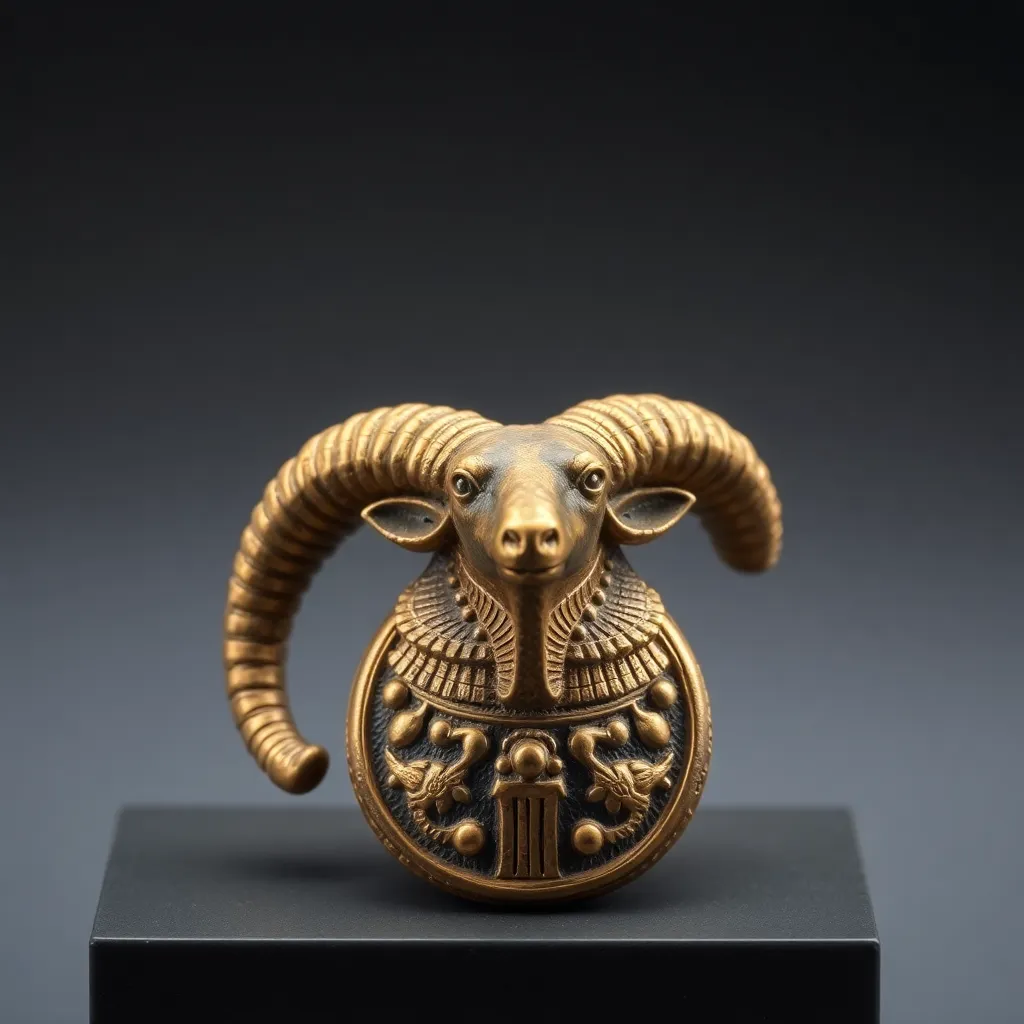The Significance of the Ram’s Horn in Egyptian Amulets
I. Introduction
In ancient Egypt, amulets were more than mere ornaments; they were powerful symbols believed to provide protection, bring good fortune, and ward off evil. These objects were integral to daily life, as well as funerary practices, serving both practical and spiritual purposes. Among the myriad symbols used in amulets, the ram’s horn stands out for its rich symbolism and historical significance.
This article explores the importance of the ram’s horn in Egyptian amulets, delving into its historical context, symbolic meanings, physical characteristics, functions, archaeological findings, and modern interpretations.
II. Historical Context of Amulets in Ancient Egypt
Amulets played a crucial role in ancient Egyptian culture, reflecting the society’s beliefs in the supernatural and the afterlife. They were often worn by individuals from all walks of life, as well as placed in tombs to accompany the deceased into the afterlife.
- Common materials used in amulets: Amulets were crafted from various materials, including stone, metal, wood, and clay, each chosen for its particular auspicious properties.
- The evolution of amulet designs: Over time, the designs of amulets evolved, reflecting changes in religious beliefs, artistic styles, and technological advancements.
III. Symbolism of the Ram in Egyptian Mythology
The ram holds a prominent place in Egyptian mythology, symbolizing fertility, virility, and strength. The ram’s horn, in particular, became a powerful symbol associated with several key deities.
- Amun: Perhaps the most significant deity associated with the ram is Amun, the king of the gods, often depicted with ram’s horns. He represented the creative and life-giving aspects of the divine.
- Cultural beliefs surrounding rams: Rams were also seen as protectors and were often associated with the sun, reinforcing their importance in Egyptian cosmology.
IV. The Physical Characteristics of Ram’s Horn Amulets
Ram’s horn amulets were crafted with great care and artistry, often reflecting the skill of ancient artisans. These amulets typically featured intricate designs and could vary significantly in size and style.
- Description: A typical ram’s horn amulet might be carved directly from the horn or modeled in clay or metal, adorned with engravings that depicted deities or protective symbols.
- Techniques used: Crafting techniques included carving, inlaying, and polishing, often resulting in highly decorative pieces.
- Variations: The size and design of ram’s horn amulets varied across different periods, often reflecting the prevailing artistic styles and religious beliefs of the time.
V. Functions of Ram’s Horn Amulets
Ram’s horn amulets were believed to possess various functions, contributing to their popularity in both daily life and funerary practices.
- Protective qualities: These amulets were thought to provide protection against evil spirits and misfortune, serving as a talisman for the wearer.
- Funerary practices: In the context of tombs, ram’s horn amulets were often placed with the deceased to ensure safe passage and protection in the afterlife.
- Healing: They were also used in daily life for their supposed healing properties, believed to ward off illness and promote overall well-being.
VI. Archaeological Findings Related to Ram’s Horn Amulets
Numerous archaeological discoveries have shed light on the significance of ram’s horn amulets in ancient Egyptian society.
- Significant discoveries: Archaeologists have uncovered ram’s horn amulets in various tombs and temples, highlighting their importance in ancient burial customs.
- Analysis of inscriptions: Many amulets bear inscriptions and markings that reveal their intended functions and the beliefs surrounding them.
- Case studies: Numerous notable artifacts have been studied, providing insight into the craftsmanship and cultural significance of these amulets.
VII. Modern Interpretations and Legacy
The legacy of the ram’s horn in Egyptian amulets continues to resonate in contemporary practices and beliefs.
- Influence on modern spirituality: Ancient Egyptian beliefs have inspired modern spiritual practices, with symbols like the ram’s horn finding new meanings and uses.
- Cultural contexts: The ram’s horn is often referenced in literature, art, and popular culture, signifying its lasting impact on human creativity and spirituality.
- Interest in artifacts: There remains a keen interest in Egyptian artifacts and symbolism, with museums and collectors valuing these pieces for their cultural significance.
VIII. Conclusion
In summary, the ram’s horn in Egyptian amulets symbolizes a rich tapestry of cultural beliefs and practices, reflecting the ancient Egyptians’ reverence for the divine and the protective power of symbols. The enduring legacy of these amulets highlights the importance of preserving ancient cultural symbols that continue to inspire and influence modern spirituality and artistic expression.
As we explore the significance of the ram’s horn, we are reminded of the depth of meaning embedded in ancient artifacts and the universal human quest for protection, health, and connection to the divine.




